2. Remove the master cylinder.
3. Remove the clutch slave cylinder.
4. On a gearbox with a cast-iron crankcase, unscrew the bolts securing the clutch housing to the engine, pry and remove the crankcase.
5. The clutch release fork and release bearing can be left on the clutch housing.
6. Fix the clutch by inserting a mandrel (see photo).
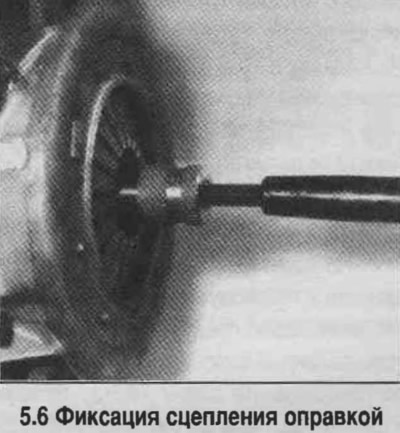
7. Find the alignment marks of the clutch disc (letters X or O), if not available, mark the position of the clutch on the flywheel (see photo).
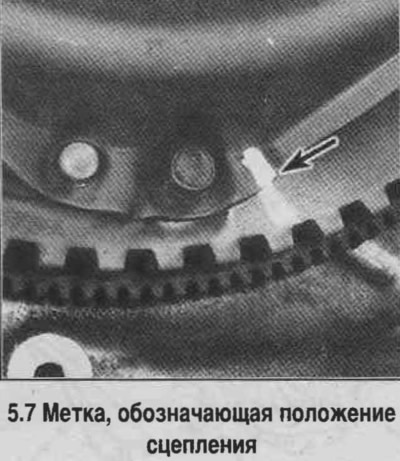
7. Gradually and evenly, in a diagonal manner, loosen the bolts, unscrew the bolts and remove the clutch.
8. As a rule, only the friction disc needs to be replaced. However, if disk oiling is detected, then the cause must be found and eliminated.
9. Check the condition of the flywheel (see photo). It is recommended to remove the flywheel and grind regardless of the surface condition.
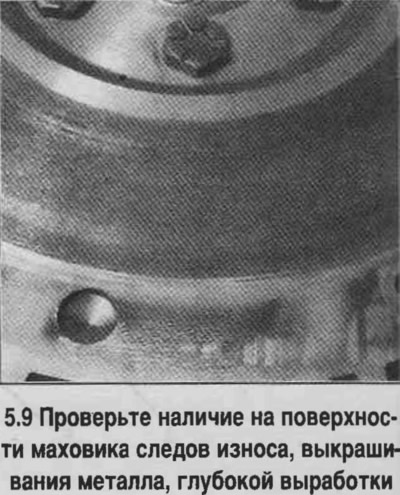
10. Check the condition of the guide bearing.
11. Check the condition of the surface of the friction disc, the springs, the strength of the rivets (see photo).
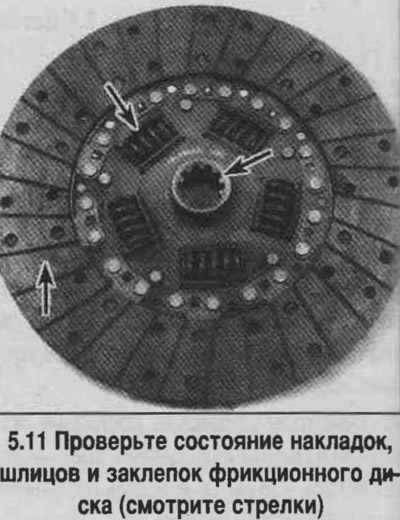
12. Together with the friction disc, the release bearing also changes.
13. Check the condition of the surface of the pressure plate, diaphragm spring and spring pins (see photo). Minor defects in the disc can be sanded with sandpaper; in case of significant defects, replace the clutch.
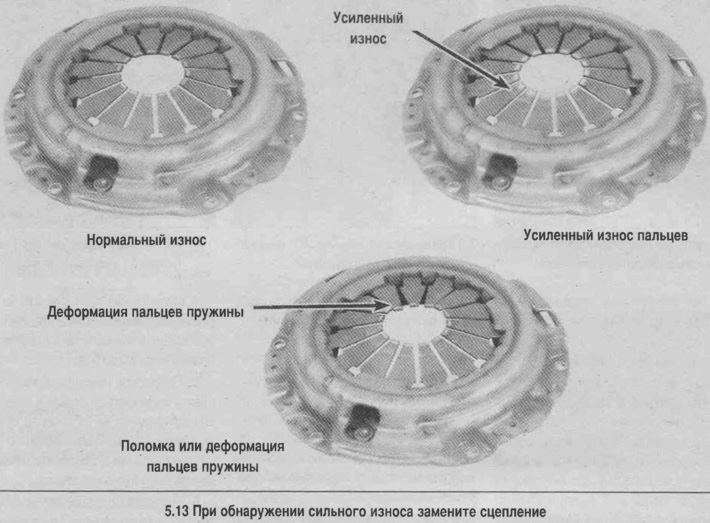
14. Thoroughly clean the flywheel and clutch. Install the clutch, aligning the marks, and tighten the bolts by hand.
15. Center the disc with a mandrel that should fit into the pilot bearing and gradually and evenly tighten the clutch bolts.
16. Lubricate the release bearing groove, the rubbing surfaces of the fork and the splines of the gearbox input shaft with refractory grease. Lubricate the internal grooves of the release bearing with refractory oil, also lubricate the thrust parts of the clutch release lever.
17. Install release bearing.
18. On a gearbox with a cast iron crankcase, install the bell crankcase and tighten the bolts to the specified torque.
19. Install the gearbox.
